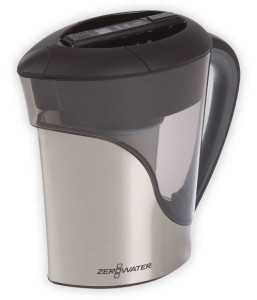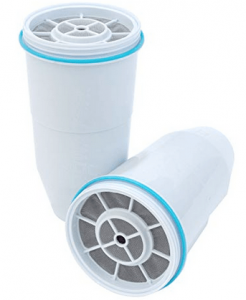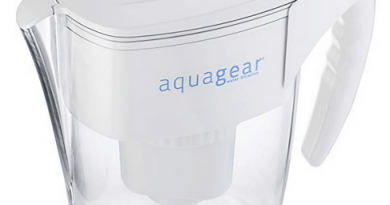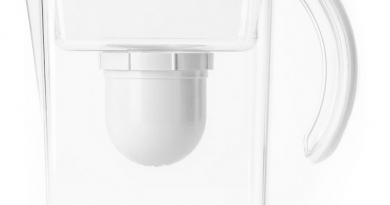
ZeroWater Filter Pitcher Review
ZeroWater filter is one such product that claims to give you a 000 reading on dissolved solids in the filtered water.
No one can deny the fact that health is the biggest wealth you can have. This is why it makes sense to look for a good water filtering pitcher to make sure that your drinking water is free of pollutants.
While there are several options on the market ranging from bottled water to expensive reverse osmosis systems to get pure drinking water, water filter pitchers have become a favorite, given their affordable pricing and effective functionality.
I will review the ZeroWater filter pitcher to help you get a better understanding of the product to see if this is right for you.
ZeroWater Filter Pitcher Technical Aspects
[table id=29 /]
ZeroWater Filter Pitcher Buying Considerations
The efficiency of a water filter depends on several characteristics like its filtering mechanism, filtering time, capacity and so on. Let’s have a look how this water filter jug scales against other alternatives before you set your mind in buying this product.
So, this is what you should consider:
-
Available sizes
ZeroWater provides a good variety of pitcher size options (volume wise), ranging from six (6) to twelve (12) cups, thus leaving you with a lot of room to help you choose a pitcher that suits your requirements and usage.
-
BPA-Free Material
All the pitchers from ZeroWater are made of BPA-free materials and are available in two (2) versions: plastic and steel models.
The stainless steel model (designed to hold up to eleven (11) cups) performs better as they are made of a durable material and the lid stays on better when compared to the plastic model, however it could be a little bit heavier when fully loaded with water.
In addition to the above, I believe this steel version will also reduce the amount of bio-films that get built-up overtime on the container.
The smaller variations are ergonomically designed and are especially easy to use and fit quite well in a refrigerator. The pitcher also has a spigot that makes it easy to pour yourself a glass of water without spilling over.
-
Contaminants reduced
ZeroWater does what it says. It brings down the Total Dissolve Solids (TDS) level to almost the same as that of purified bottled water by removing most of the suspended solids.
The pitcher effectively removes fluoride, chlorine, lead, chromium, organic and inorganic compounds and mayor metallic and chemical contaminants from water.
The resulting water tastes neutral and is devoid of any inorganic mineral particles.
-
The Filters Specs
The filtration process and approach used in ZeroWater is quite different from other gravity-fed filters; How? It has a five (5) stage filtration system against the usual 2 stage filters (check our Alexapure Pro gravity fed water filter review for comparison) used by many other pitchers.
Let’s list down the stages along with their materials:
- Stage 1 – coarse filter: usually made of fibers to retain medium to coarse size particles. This is an important stage to improve the effectiveness of the next stages.
- Stage 2 – foam distributor: as its name says, the purpose of this stage is to distribute evenly the water across the surface of the next filter. Even though, it is not meant to remove pollutants, it will retain some particulate material along the way.
- Stage 3- multi-layered activated carbon and oxidation reduction alloy: in this stage, any potential organic and inorganic compounds will be removed by the GAC. Chlorine and most of the common heavy metals will be removed over the oxidation process.
- Stage 4 – an ion exchange resin: anions and cations such as nitrogen and phosphorus compounds are reduced in this stage.
- Stage 5 – fine and woven membrane: the final stage comprises a fine screen to remove any additional dissolve solids that made their way through the previous layers.
Couple of downsides with the filter:
- The actual time that takes to filter the water volume in the reservoir is around 8.5 minutes (for a 10 cup model) and if you are an impatient person, this could be an issue.
- Apparently when the filter is ready to be replaced, the water can get a bad smell and taste, but it is somehow normal to see this type of problem.
- The filter lifespan is very short, which is directly dependent of the level of contamination of your tap water.
Operation and Maintenance
Using the ZeroWater pitcher is easy. Once you unpack, you just have to screw in the filter to the pitcher and start using it right away.
The filter takes an average of about 110 seconds to give one cup of pristine clear water.
One of the unique selling points of the ZeroWater filter is that it comes with a TDS meter that shows the dissolved solids level reading in the LED display.
It is highly recommended to replace the filters when the TDS reading gets to 6 mg/lt on the meter provided.
NOTE
The claimed TDS reading of “zero” should not be taken as an exact number. This number is taken from the standard meter provided, which I would question in terms of the accuracy and calibration of the device. I would be happy seeing the results coming from a NATA certified laboratory.
ZeroWater Filter Pitcher Downsides
This water filter pitcher is great but as any other product, it has some downsides that I want to share:
-
Design

-
Filter lifespan accuracy
The other aspect that can be improved is the urgent need to replace the filter when it gets a reading of 6 ppm. There is no gradual change in the quality and this warrants for an immediate replacement that can be a little bothersome.
An average filter lasts up to 40 gallons (something like the APEC WFS 1000 3 Stage Under Sink Water Filter) but the lifespan of the filter can go down very fast if the source water is highly contaminated.
This pitcher can be feasibly used only with water that has been treated to an extent or has low TDS levels. Otherwise, though the water filtering is good, the running costs can get very expensive.
ZeroWater Filter Review Wrap Up
This filter pitcher version may not be a fit for everyone. It has some amazing filtering capabilities that are on par with expensive RO systems when used for moderately contaminated water.
It removes virtually cent percentage of solids from water and works great as a pitcher for home use.
The installation and operation are simple but maintenance could be another story. If taken care of properly, the filter life can last to an optimal duration of a month, but at the end it is not affordable.
The ZeroWater filter pitcher is a good choice if you have the money to invest in filters every so often; if not, then avoid buying this product.
Some images courtesy of Zero Water.
Purchasing Options
The ZeroWater pitcher is currently available for purchase. Follow the link to check the current price for the ZeroWater filter pitcher on Amazon.






